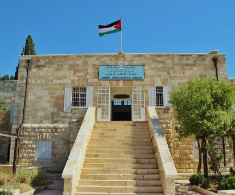The Jordan Pass is an outstanding way to explore Jordan. Visit UNESCO World Heritage sites, Museums, Castles and more.

Jordan Archaeological Museum

Madaba Archaeological Museum

St. Elijah's Hill
(Tal Mar Elias)

Dar Al-Saraya Museum - Irbid

As-Salt Historical Museum

Madaba Archaeological Park